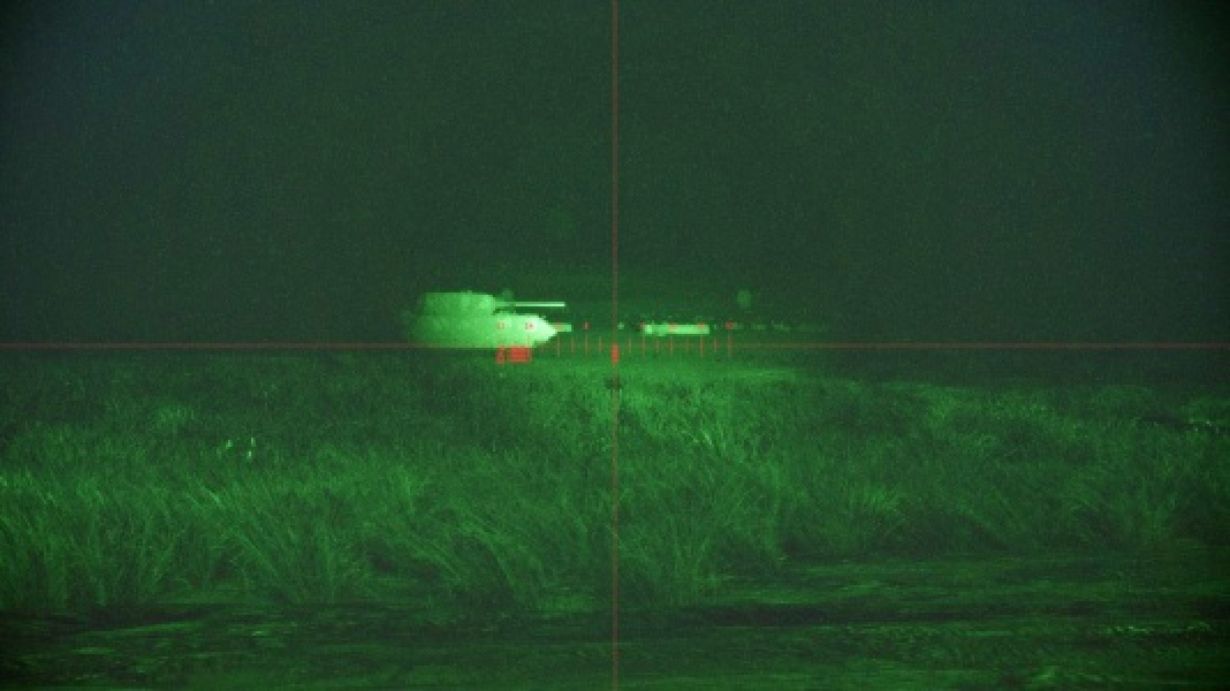Russian defense industry officials claim to have developed a drone with a thermal imaging camera and integrated it with an even more powerful ground-based multi-camera thermal sighting system in what is hinted to be a first-of-its-kind platform in the country.
Western experts believe Russia long lacked such platforms and is undertaking massive industrial and scientific efforts following the lessons learned in Ukraine. The entire platform has been tested in the “operational area” in Ukraine, and the initial batch, with the final tweaks and configuration, has already entered production.
According to TASS, the ground-based platform is called the Blockpost 4-T, and the thermal camera-equipped drone it has been fused with is the UAV400T. The drone has been described as the “first quadcopter drone with a domestic thermal imager.”
Russian defense bloggers on Telegram groups boasted how the thermal imaging camera is fully indigenous with domestically developed software and components, which had become necessary owing to Western sanctions.
Eyes From The Ground
The report mentions two key capabilities, Russian airborne and ground-based optical reconnaissance systems, that were missing.
First was the trade-off between a large field of view and image detail, which according to Director General of the Astron Optical-Mechanical Design Bureau Vladimir Popov, was always a dilemma.
“Currently, the Russian army is armed with various optoelectronic means of collecting information about the terrain in all weather conditions, including thermal imaging. At the same time, there is always a dilemma for optical and thermal imaging means – either you have a large field of view or provide high image detail.”
Thus Russian engineers decided to “integrate” a “flying thermal imager” into the “ground surveillance system,” solving the dilemma in an unconventional and “elegant way,” Popov said.

A leading US-based analyst of Russian unmanned systems, who preferred not to be named, told EurAsian Times that he, too, believed the system’s development was motivated by the Russian inability to have continuous surveillance.
“The UAV is a flying thermal imager. The article hints that there are few thermal imagers available for round-the-clock surveillance, hence the novelty of this drive equipped with one,” said the analyst. According to the analyst, other Western systems and drones have long had this capability.
The Blockpost-4T can detect people up to a distance of 800 meters and vehicles at 2,000 meters (2 kilometers) where “intelligent built-in analytics highlights the detected objects on the screen to help the operator,” the report added.
This suggests that the system has a digital highlighter, similar to facial recognition, that tracks the target on the screen and runs it by a database of individuals or military vehicles.
After a target is identified, “the operator sends a drone to the desired point,” which can be assumed to address the image quality and detail issue by getting close to it.
The Blockpost 4-T also has a thermal imaging system that is “unmanned” and appears to be separate from the four manned thermal cameras. The unmanned cameras are used for “target recognition, additional reconnaissance, and fire adjustment.”
A report on Aviation21, a Russian defense news website, said, “the device is designed to work as part of small units, and the main task of the complex is to identify objects that have a thermal signature that is different from the background.”

The thermal observation system appears to have been primarily developed to enhance the range of the ground-based platform with the UAV400T quadcopter, where the “integrated” feed can be viewed and analyzed in a single “output.”
Russia’s General Leap In AI
This device doesn’t appear to be an Artificial Intelligence (AI)-based system. However, it is part of a trend of other highly advanced automated technologies that Russia has introduced in platforms like the Su-57 and the Marker Unmanned Ground Vehicle (UGV).
They have either been officially called AI-enabled, or their description in publicity material fits that description.
The Felon has AI-enabled data-linking and sensor-fusion to provide the pilot “intelligent support and take decisions under time pressure.” The Marker, meanwhile, can identify enemy tanks; share data with friendly assets and other Markers; identify and engage targets through various camouflage and operate entirely autonomously for days; and has “adaptive AI” which the developers can teach “different types of goals.”
This suggests a clear AI-Machine Learning (ML) technology where automated systems are corrected over a period of time with human intervention, improving their performance in the designated tasks.
The system is also the second indigenous thermal imaging camera for military purposes reported to have been developed this year. In January, TASS reported that the Rostov Optical-Mechanical Plant was developing the TKN-3TP thermal imaging device for tanks.
The camera allows tank commanders and gunners to identify targets at ranges of one kilometer in all weather conditions, from the earlier 400 to 500 meters.
- The author can be reached at satamp@gmail.com
- Follow EurAsian Times on Google News




